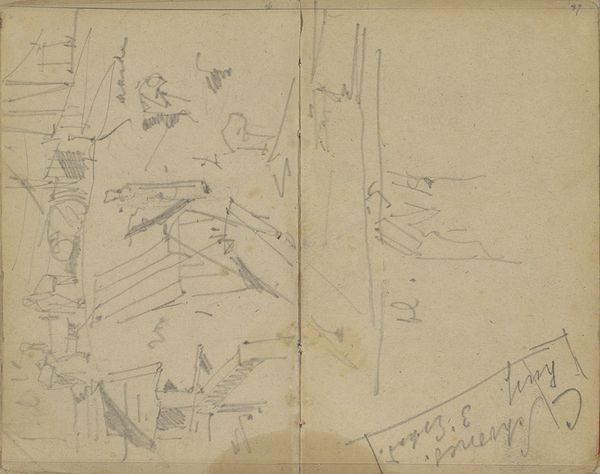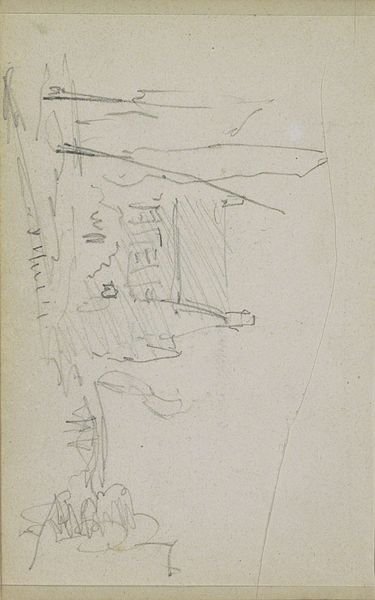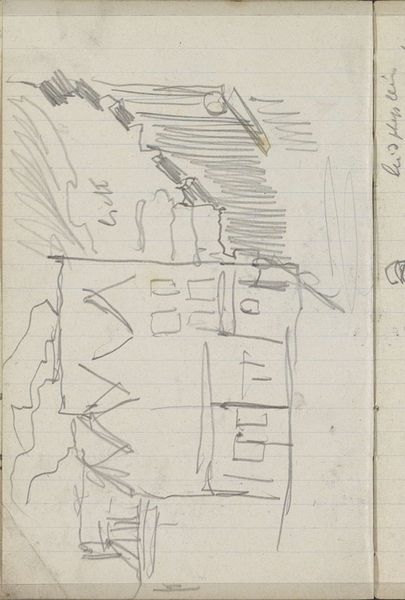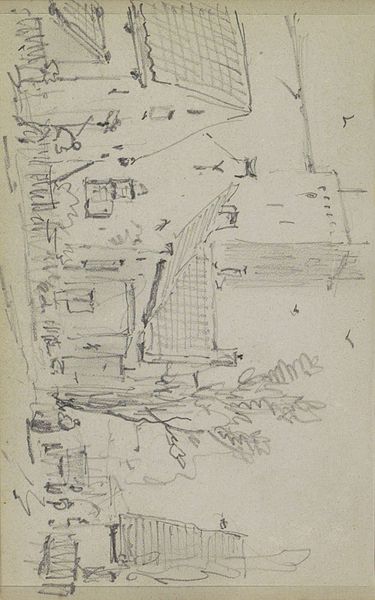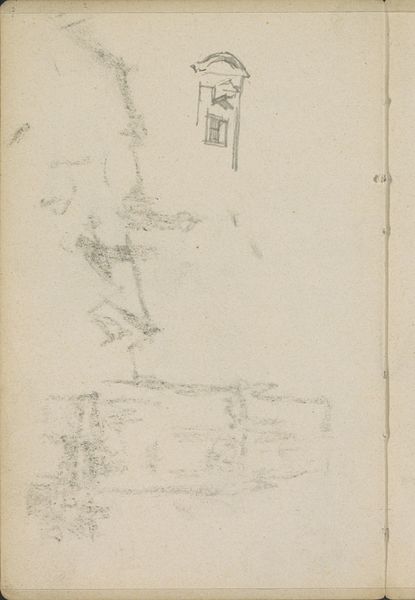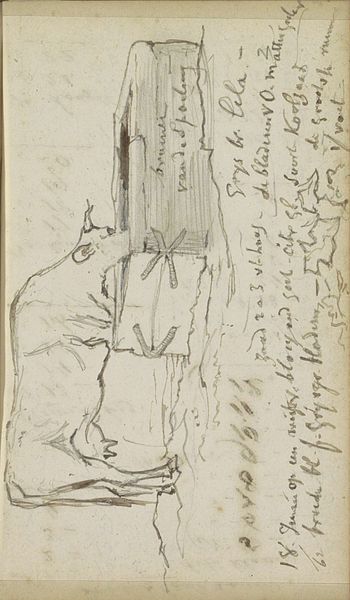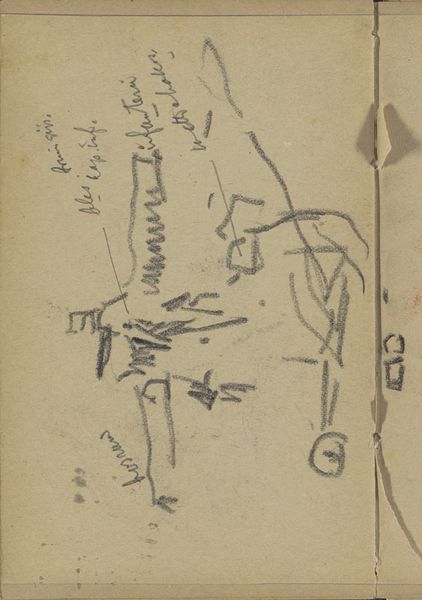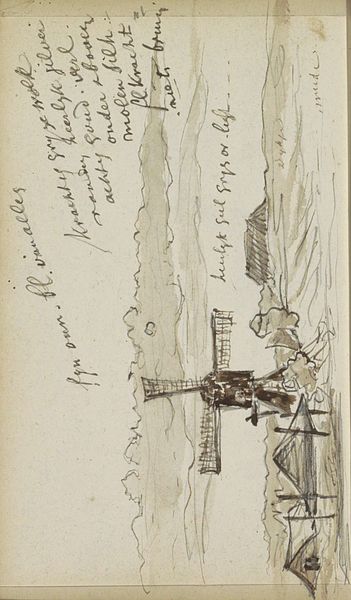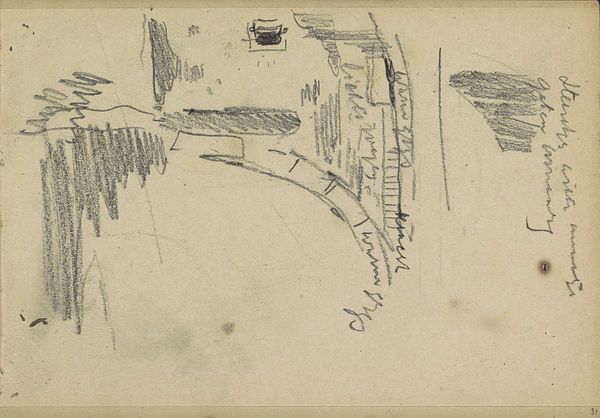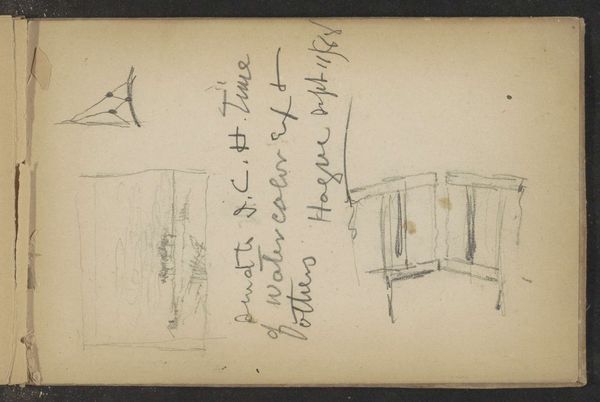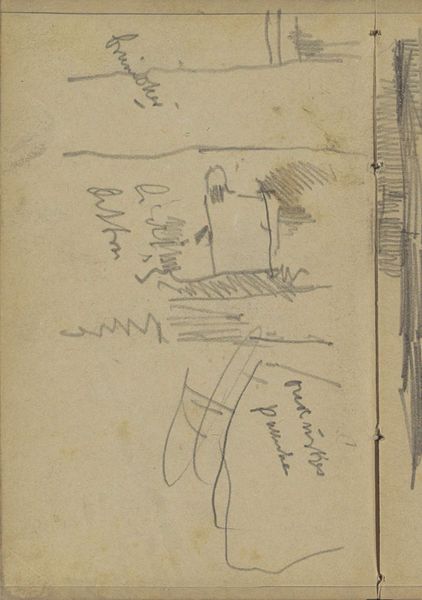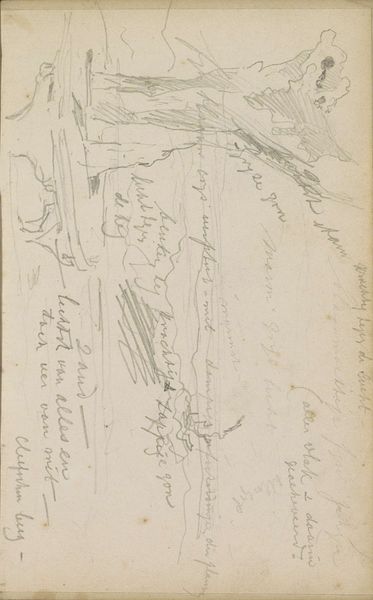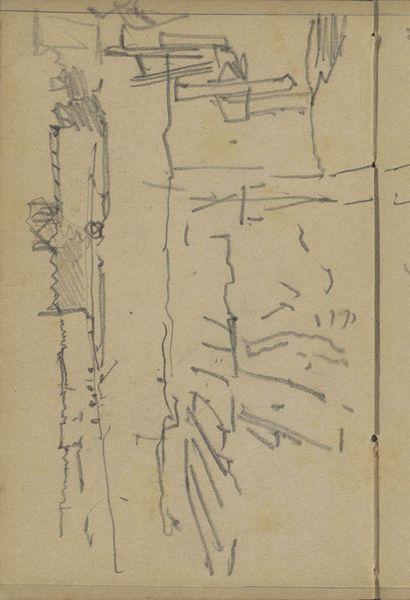
drawing, pencil
#
architectural sketch
#
drawing
#
impressionism
#
sketch book
#
landscape
#
personal sketchbook
#
sketchwork
#
sketch
#
pen-ink sketch
#
pencil
#
pen work
#
sketchbook drawing
#
storyboard and sketchbook work
#
sketchbook art
#
realism
#
initial sketch
Copyright: Rijks Museum: Open Domain
Curator: George Clausen's "Arbeiderswoning," created in 1875 using pencil, presents us with a seemingly simple sketch, yet it speaks volumes about the social and economic realities of the time. Editor: It definitely feels like more than just a quick sketch; there's a sort of… vulnerability in its depiction. What historical or social elements really inform your understanding of this drawing? Curator: Considering Clausen’s focus on rural life and labor, we have to understand the broader context of industrialization. How did it impact rural communities? What narratives were being constructed around labor and poverty? Clausen’s commitment to Realism also demands we look closely at the politics embedded in representing everyday life. It asks, who deserves to be seen, and how? Editor: So it’s less about the aesthetic value of the sketch itself, and more about what it represents within that historical context? The little I know about Realism, I associate it with this idea of showing everything-- the good and the bad? Curator: Exactly. Look at the architectural structure itself, how it is rendered without idealization. This resists the romanticization of rural life prevalent in some art circles. Instead, Clausen seems to be hinting at the lived experience, maybe even struggles, inherent in the 'Arbeiderswoning' or worker's dwelling. How does that relate to the way land ownership or tenancy affected laborers at the time? Editor: I never really thought of it that way! Looking closer, it doesn’t hide the potential difficulties of this particular socio-economic backdrop. So, to really *see* a work like this, it feels essential to be aware of all these extra layers-- cultural, theoretical… Curator: Absolutely. This piece prompts questions about visibility, representation, and the social narratives interwoven into seemingly simple depictions of everyday life. And understanding those questions are absolutely critical for understanding both the piece, and our relation to it. Editor: This has changed my perception quite a bit! It really brings a critical, socially conscious lens to this work that I didn't initially recognize. Thanks!
Comments
No comments
Be the first to comment and join the conversation on the ultimate creative platform.
